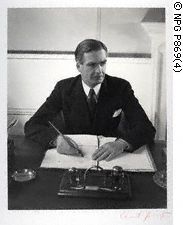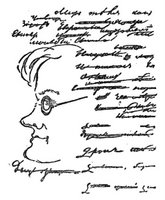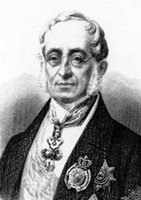THE SHEBAA FARMS CONUNDRUM: A REPLY TO MATTHIEU CIMINO
"During his March 27 speech this spring, President Bashar al-Assad was asked why Syria did not clear up ambiguities about Lebanon’s ownership of the Shebaa farms’ region by providing an official Syrian map of the region, that Israel claims belongs to Syria and that Syria and Lebanon both claim belongs to Lebanon....
His announcement emphasizes the complexity of the Shebaa Farms question. Located atop a hill, the Shebaa Farms (or hamlets) are important to both water resources and politics in the region. On May 21st, 2000, after Israel withdrew from Lebanon, ending its occupation that lasted over 20 years, Hezbollah and Syria claimed that the Jewish State still occupied a piece of land northeast of Mt. Hermon in the Golan Heights. That territory, which few had heard about previously, is made up of 14 farms. It is located at the three corners where Lebanon, Syria and Israel share a border.
The problem lies in a geographical error. During the French mandate (1920 – 1946), the Lebanese, French, and Syrian authorities did not pay attention to the frontier between Lebanon and Syria. The former was still considering Lebanon as one of its provinces and seemed not to be interested in drawing the border between the two countries.
Despite the Shebaa area being small in size (approx. 16 sq.m), the problem is difficult. The village of Shebaa is located in Lebanon, northeast of “Djebel ech-Cheikh” (Mount Hermon) while its farms are located south of the mountain. From the Mandate in 1920 to the Six-Day War of 1967, the farms were considered Syrian territories de jure, i.e. on the maps. During that period – and before – the Lebanese farmers used to cross the mountain area to reach their fields, which were cultivated with apple orchards.
Thus, Lebanon and Syria were artificially separated in the Shebaa region by the Wadi el-’Assal, a stream. The Lebanese farmers considered that the river to be the border between the two countries. French authorities did not take into account the Lebanese farmers who crossed the borders to their who had to reach their farms.
The Shebaa Farms case was at first nothing but a cadastral issue and border dispute. As a French diplomat noted in 1935, “this issue is linked to the delimitation of the border between Lebanon and Syria. All legal disputes will be resolved when we will be able to determine if a particular farm is located in Syria or in Lebanon. Everything else is irrelevant”.
In 1950, after the 1948 War, Syria installed an advanced military observation post and carried out topographical surveys in the farms. Thus, from 1920 to 1967, the Shebaa Farms were deemed to be Syrian land on military maps despite the fact that almost all the cultivator of the region were Lebanese and few Syrians lived there. In 1967, Israel invaded the Golan Heights and took the Shebaa Farms. The Israelis expelled the Lebanese farmers that were living there.
It seems that Israel did not realize it had invaded a de facto Lebanese territory.
In 1978, the Israeli Defense Forces transformed the farms into a buffer zone and adorned them with Hebrew road signs. Israel distributed national ID’s that were refused by the majority of the farmers. When Israel withdrew from Lebanon in 2000 after 18 years of occupation, the Shebaa Farms became central to Hezbollah’s continuing justification for war against Israel. In 2006, during the “33-days War”, the Shebaa Farms issue took central stage.
For Hezbollah, it is absolutely essential to have a justification to maintain its arms which are a guarantee to its survival. In his March, 27th speech, Bashar al-Assad maintained ambiguity about the Shebaa Farms. For Syria, the Shebaa Farms are Lebanese but the Syrians refuse to provide official documents proving it. In fact, Syria alleges that it possesses documents showing that the farms are Lebanese territory but that those documents still have to be clarified with precise topographical and cadastral studies. Unfortunately, neither Lebanon nor Syria have access to the area.
The Syrian position is clear: Israel must withdraw from all occupied territories, especially the Golan Heights, which includes the Shebaa Farms area. Then Syria and Lebanon will be able to resolve their border issues. However, if Syria and Lebanon have not demarcated their borders since 1920, it is doubtful they will do so in
2010".
Matthieu Cimino, "A brief Introduction to the Shebaa Farms Problem", 8 May 2010 in www.syriacomment.com.
Matthieu Cimino, a doctoral candidate in the ultra-elite Science Po in Paris, contributed the above referenced article on the Shebaa farms conundrum a few days past. And, while it to some extent clarifies matters a bit as it concerns the alleged problem of the Shebaa Farms as it relates to their status and the history of the same, in point of fact, he also inadvertently confuses matters (no doubt unintentionally) further. Therefore, I hope that my two centimes endeavor here, will clarify things for all concerned. In terms of origins of the problem, Cimino does not doubt have the situation right, as it concerns the fact that the French Mandate authorities singularly failed to demarcate the existing boundary of the future, independent states Lebanon and Syria in this particular area. No doubt due to the fact that per se, the area was & is both small and all things considered unimportant. That being said, the French authorities choose to ignore the fact that Lebanese farmers were using the area, and, simply indicated that the area belonged to Syria. After the independence of both countries from France in 1943-1945, both the Lebanon and Syria, choose to continue with the de jure ('in law', as in 'international law', not as Cimino puts erroneously, 'on the maps') demarcation of the area as being a part of Syria. In the case of Syria, that meant that Damascus posted border guards and some rudimentary installations in the area. Therefore signaling that Syria regarded the area as belonging to it. An action which the Lebanon did not in fact dispute or contest. Consequently, when the Six Day War occurred in 1967, Israel, occupied the area as part of the Syria's Golan Heights which it occupied in toto. An action with once again Beirut did not dispute. Nor did Beirut indicate to the United Nations at the time, that it was a party to the dispute between Israel and the other antagonists of the just concluded war. As Asher Kaufman, who has perhaps a claim to being (at least in the English language) the leading scholar on the subject matter has stated, the Lebanese non-action was part and parcel of both Syria's and Lebanon's views on the subject in the 1970's:
"At least twice in the 1970's, Syria and Lebanon had a chance to claim or disclaim sovereignty over the region. In 1974, with the signing of the Syrian-Israeli Disengagement Agreement and the deployment of UN forces in the Golan Heights, Syria accepted the existing maps, which located the Shebaa farms within the occupied Golan Heights. Similarly, with the deployment of the UN forces in South Lebanon in 1978, the Lebanese government endorsed the same maps, which excluded the Shebaa farms."
Asher Kaufman, "Understanding the Shebaa Farms Dispute: roots of the anomaly and the Prospects for Resolution," 2004, in Palestine-Israel Journal in www.pij.org
A state of affairs for which all intents and purposes remained the same on the inter-governmental level until the latter part of the 1990's. Indeed, it was only with the Israeli withdrawal from the Lebanon in 2000, a withdrawal which was certified as 'total & complete' by the United Nations (an institution which can hardly be said to have a 'pro-Israeli' bias) at the time. Consequently, it is difficult to take seriously the subsequent Syrian and Lebanese (mainly in fact Hezbollah)claims
that the farms were both de facto and de jure Lebanese territory, and therefore the Israeli failure to evacuate the same, made it the latter party a continuing 'occupier' of Lebanese territory and thus providing both domestic and international legitimacy for Hezbollah armed militia. The fact that the Syrian regime still refuses to outright disclaim in precise legal fashion, any claims to the Shebaa Farms, just underlines that political (rather than legal) nature of these newly invented claims.
To conclude, it is obvious that contrary to Cimio's assertion, the farms were most definitely not, repeat not, 'de facto' Lebanese territory, when Israel occupied them in 1967. The mere fact that Lebanese farmers used them for various purposes prior to that date, no more makes them in the context of international law, either de facto or de jure 'Lebanese', any more than say the fact that the United States does not police its borders with Mexico and allows the people of the latter to travel across parts of it at will, make those sections of its border, 'Mexican' rather than 'American' territory. Either de factor or de jure. Notwithstanding the fraught and emotional nature of the politics of the Near and Middle East, it is up to scholars to keep their heads on, and, to explore in as forensic and empirical fashion as possible the claims and counter-claims of all the antagonists. Unfortunately, in the case of the Shebaa Farms, Cimino has willingly or unwillingly chosen to become a party to the dispute.











0 Comments:
Post a Comment
<< Home